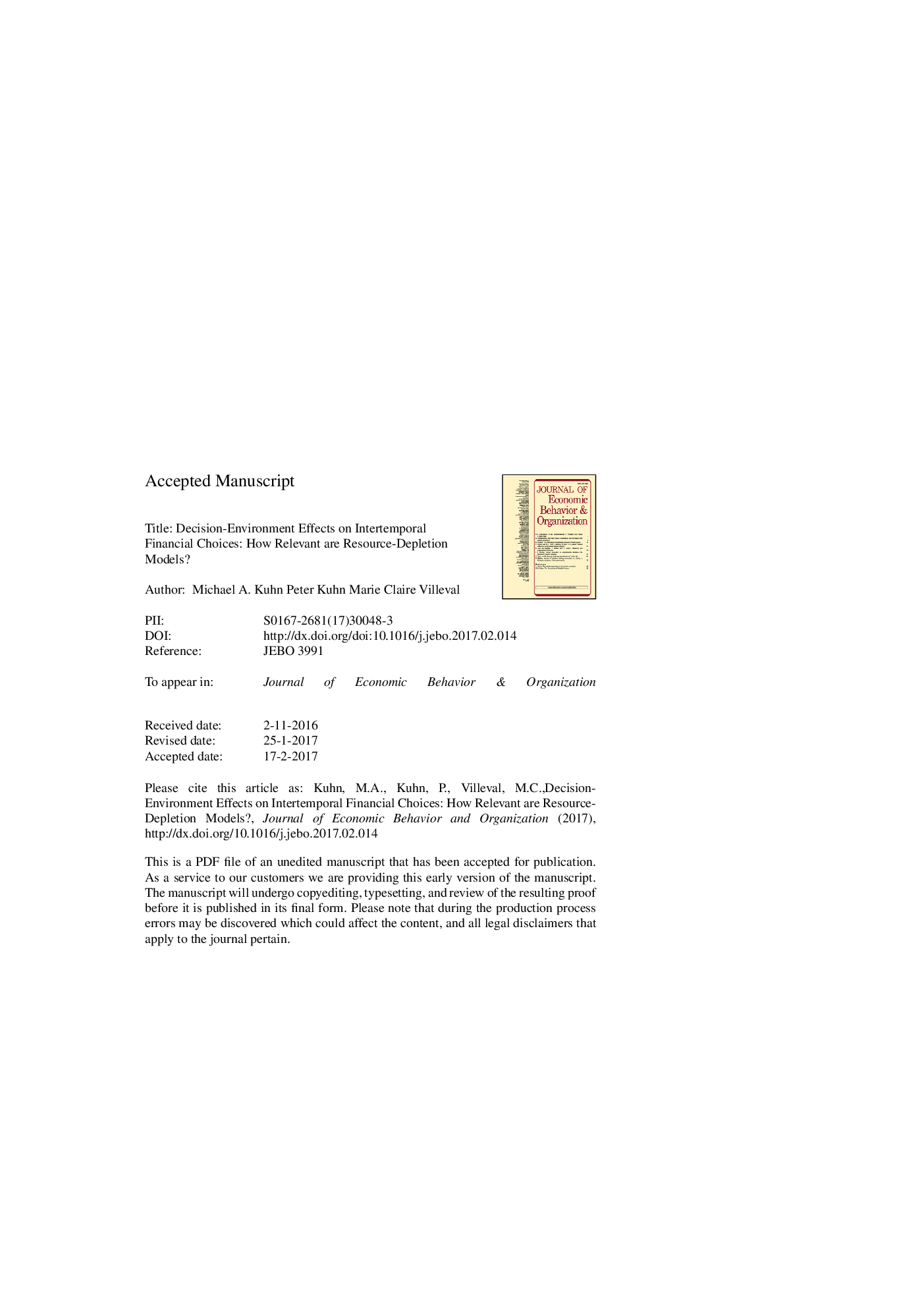ترجمه فارسی عنوان مقاله
تاثیر تصمیم گیری محیطی بر انتخاب های موقت بین المللی: مدل های تخریب منابع چقدر مهم هستند؟
عنوان انگلیسی
Decision-environment effects on intertemporal financial choices: How relevant are resource-depletion models?
| کد مقاله | سال انتشار | تعداد صفحات مقاله انگلیسی |
|---|---|---|
| 153811 | 2017 | 37 صفحه PDF |
منبع

Publisher : Elsevier - Science Direct (الزویر - ساینس دایرکت)
Journal : Journal of Economic Behavior & Organization, Volume 137, May 2017, Pages 72-89

